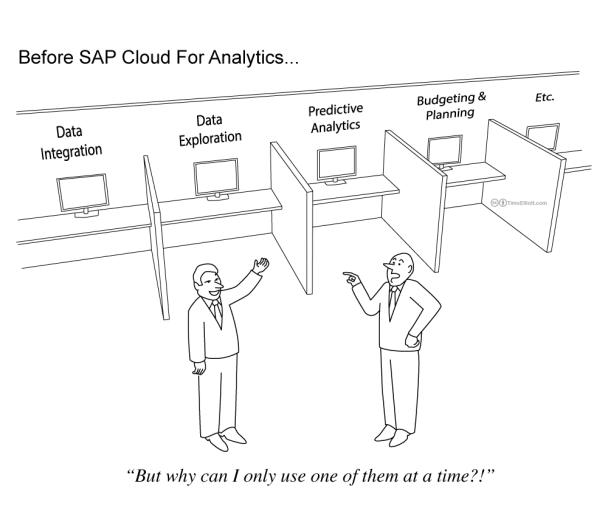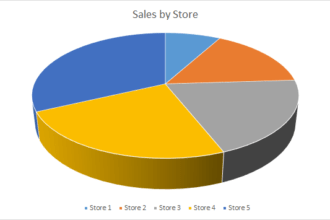Over the last quarter-century, the analytics industry has slowly gathered a lot of different technology options. Starting with simple reporting, there has been a steady increase in the number of different features available. These include data integration and data quality, data exploration and data visualization, predictive analytics, and specialized tools for areas such as map-based analytics and text analytics. And finance users have had their own selection of analysis tools, including budgeting and planning, and scorecard systems for tracking high-level KPIs.
Over the last quarter-century, the analytics industry has slowly gathered a lot of different technology options. Starting with simple reporting, there has been a steady increase in the number of different features available. These include data integration and data quality, data exploration and data visualization, predictive analytics, and specialized tools for areas such as map-based analytics and text analytics. And finance users have had their own selection of analysis tools, including budgeting and planning, and scorecard systems for tracking high-level KPIs.
At one level all of these tools do the same thing: help organizations get the most value possible out of their information assets. But the different technologies typically came from different backgrounds and traditions, and were originally designed for different types of users.
Over time, the needs of different types of business users have blurred. Today if you want to fully leverage all of these different features across the organization, or as an individual, you typically have to install lots of different servers and interfaces. The resulting complexity has limited how much organizations have actually implemented.
 But what if you could do all of this with a single, blazingly-fast platform that you didn’t even have to install? And you could provide a single interface that blended the best of all of these capabilities to reflect the new, more agile world of work?
But what if you could do all of this with a single, blazingly-fast platform that you didn’t even have to install? And you could provide a single interface that blended the best of all of these capabilities to reflect the new, more agile world of work?
That’s the primary innovation behind SAP Cloud for Analytics, based on SAP HANA. All the engines that you might need for analytics are now available directly within the SAP HANA platform — not just advanced querying, data exploration, and native support for hierarchies, but also data integration and data quality algorithms, complex event processing, budgeting and predictive algorithms, text analytics, geo-spatial calculations and more.
Having all this functionality in a single platform means you’re no longer constrained by the historical feature silos. It holds out the promise of new ways of working that let you freely combine different aspects of analytics without having to jump between separate tools.
For example, you could:
- Easily integrate and cleanse combinations of corporate, personal, and third-party data, whether it’s from on-premise systems or in the cloud.
- Provide more insightful, accurate budget forecasts using predictive algorithms on “signal” data, such as customer sentiment.
- Easily combine and analyze structure and unstructured data, whether it’s stored in relational databases, platforms such as Hadoop, or Google sheets.
- Use predictive algorithms to automatically identify data outliers and trends, cluster data into meaningful groups, or determine the key factors that influence the desired outcomes.
- Augment data exploration with sophisticated geographical mapping
- Get closer to the vision of “Big Data Discovery”
- And much, much more.
And because of SAP HANA’s powerful “HTAP” capabilities, all this can be carried out on real-time operational data. The instant a row-level transaction hits the system, the data is immediately available for sophisticated analysis, without requiring slow, batch-based aggregations.
The future of analytics is using the power of today’s in-memory platforms to fundamentally rethink interfaces, breaking down historic silos and giving business people the power to combine all of the best of analytics and planning.
SAP Cloud for Analytics is in the forefront of this new era. To find out more, visit www.sapcloudanalytics.com







